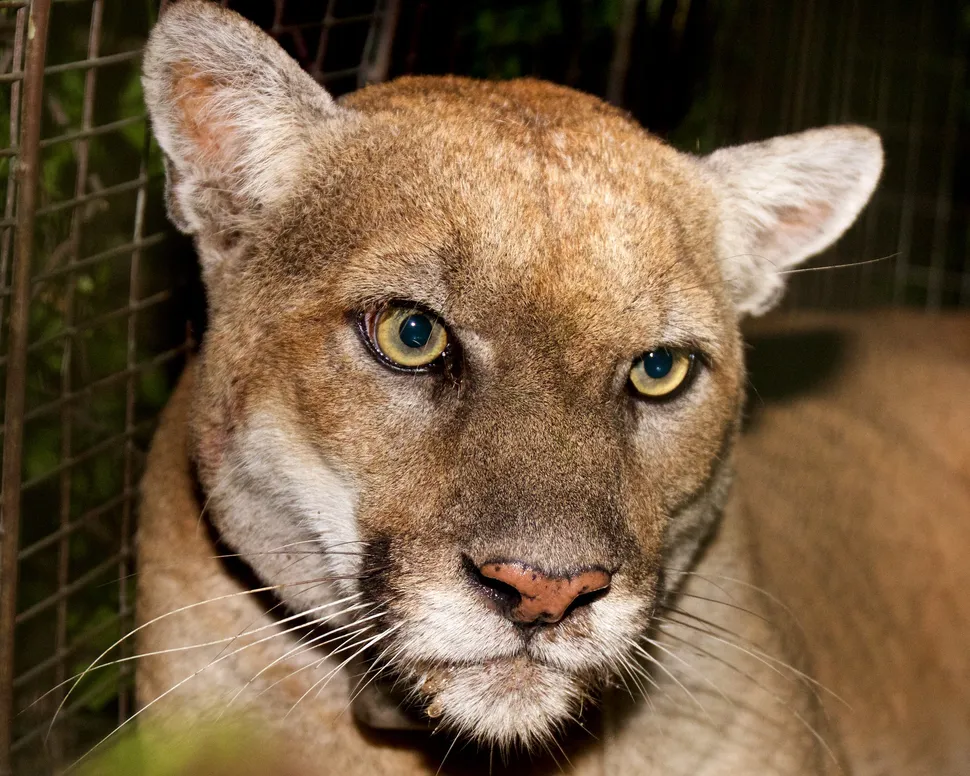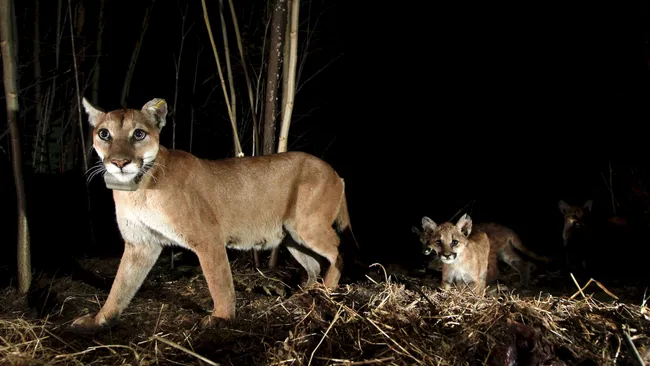The mountain lions of Greater Los Angeles are becoming more active at night to cope with humans hiking, cycling and jogging in their habitat.

Mountain lions in Greater Los Angeles have been shifting their behavior in response to increasing human recreational activity in their natural territories, according to a new study published on November 15 in Biological Conservation. These large predators, also known as pumas or cougars, are now more active at night rather than during their natural dawn and dusk periods, primarily to avoid humans who are hiking, running, and cycling in the mountains.
As human populations grow and more people use the Santa Monica Mountains for outdoor activities, mountain lions are adjusting their schedules to minimize encounters with humans. The study, led by Ellie Bolas, a doctoral candidate at the University of California, Davis, involved GPS collars placed on 22 mountain lions between 2011 and 2018. The team compared the lions’ activity patterns with data from Strava, a platform that tracks human exercise.
The results revealed that mountain lions living in areas with higher human activity shifted their hunting and roaming times to the nighttime when human activity decreased. This behavioral flexibility allows for coexistence, with mountain lions adapting to human presence without completely abandoning their habitats. As Bolas explained, this shift helps maintain a balance, allowing both species to share the same space.
The study’s findings align with global research showing that many mammals, including predators like mountain lions, are becoming more nocturnal as a survival strategy to avoid human interaction. A 2019 study in Ecology Letters found that even the sound of human voices could drive mountain lions away, with the impact on their activity similar to removing the animals from the ecosystem entirely. This fear is not without cause, as mountain lions have long been persecuted by humans.
Today, mountain lions in the Los Angeles area face multiple challenges, including the dangers posed by busy roads, wildfires, exposure to rodenticides, and habitat fragmentation. In addition to these stressors, the increased presence of people in their territories poses another significant challenge. Even seemingly harmless recreational activities can affect mountain lions by forcing them to expend extra energy to avoid humans or altering their hunting patterns.
Despite these challenges, the study provides a sense of optimism, showing that mountain lions are adaptable. Their ability to adjust their activity schedules demonstrates the potential for coexistence, and the study emphasizes the importance of allowing wildlife to thrive by respecting their needs and natural behaviors. Bolas expressed hope that, through such adaptations, mountain lions will continue to share the landscape with humans, offering a model for wildlife conservation in increasingly urbanized areas.
